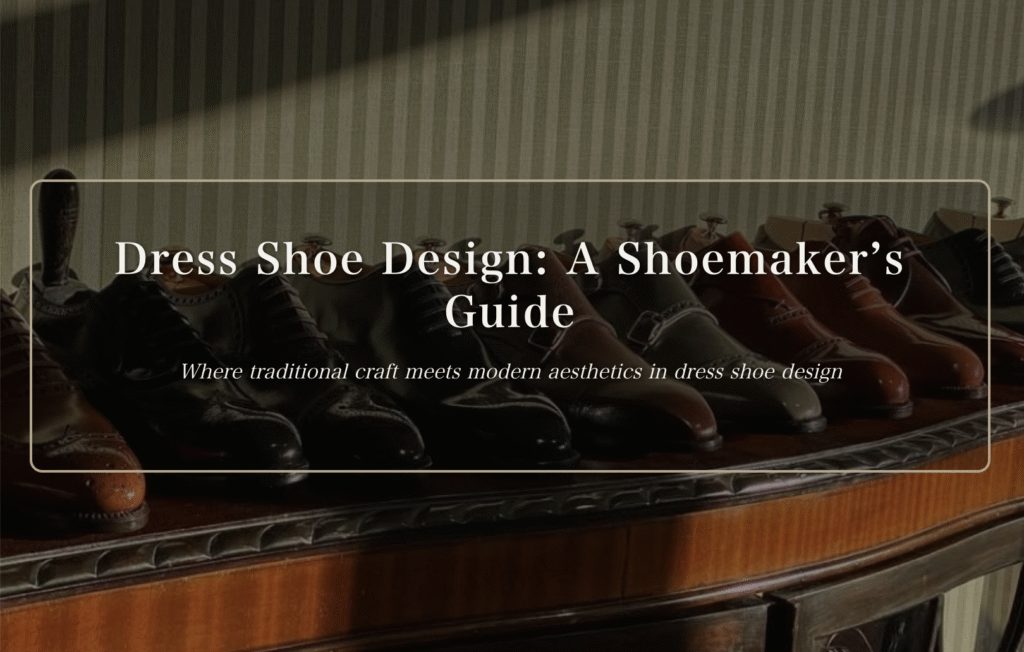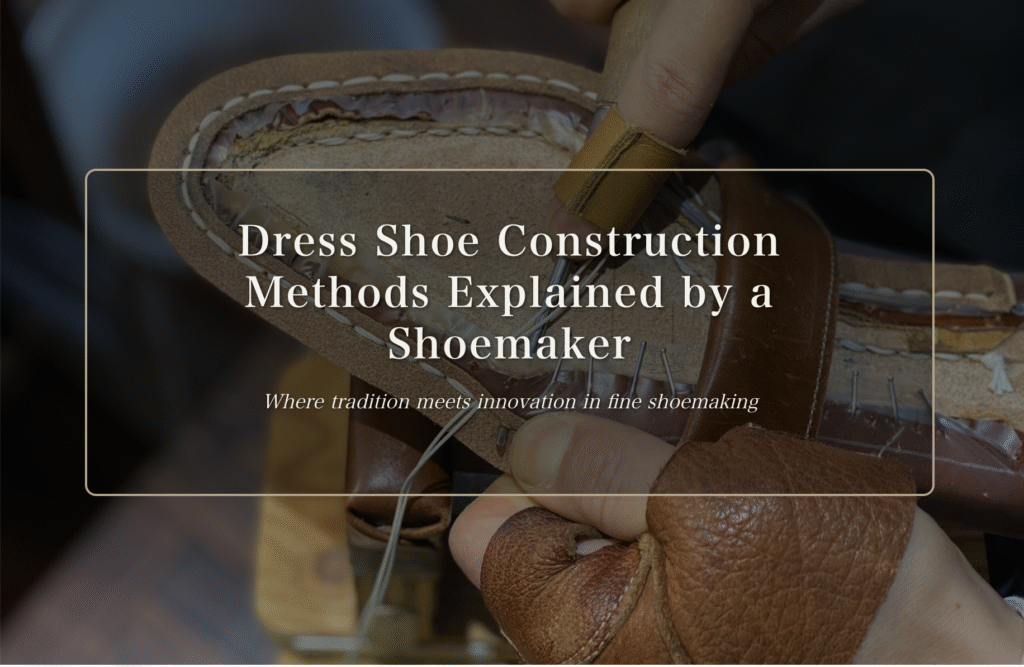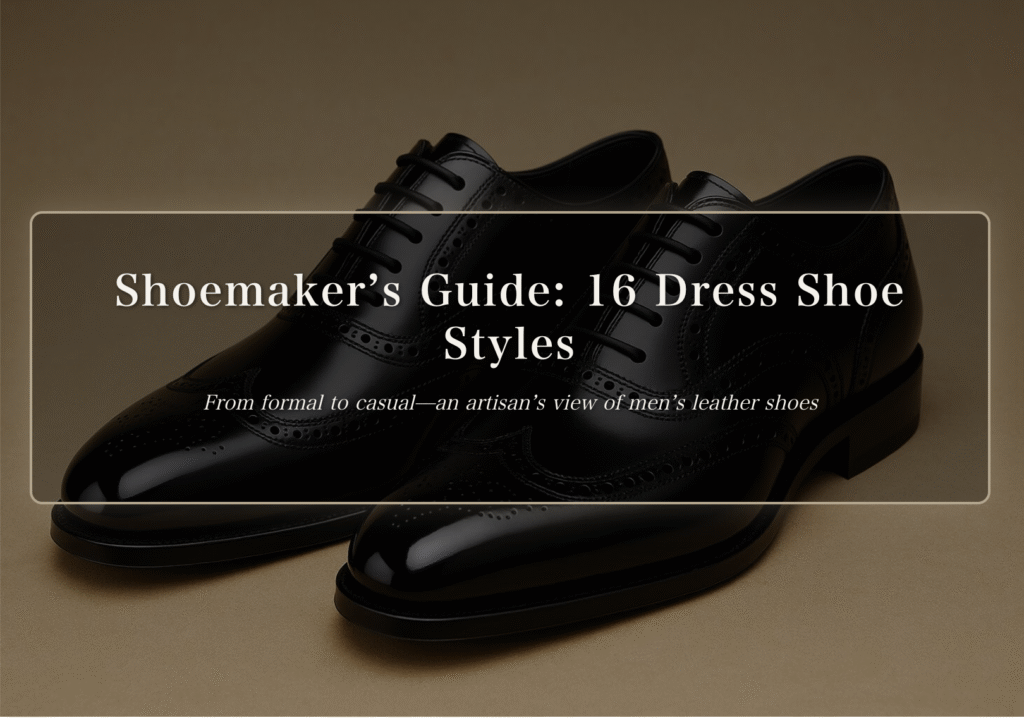How to Choose Dress Shoes: A Shoemaker’s Guide
Find your best pair by balancing what you love with what makes sense.
Last updated: ・
Author: Masayuki Kaneko
The essence of choosing dress shoes—balancing “love” and practicality
The most important thing when choosing dress shoes is to pick a pair you genuinely love. From my perspective—over two decades in the shoe world from sales to hand-sewn shoemaking—I’ll share how to honor your taste while avoiding mistakes, plus clear guidance for selecting your first pair.
I’ve helped many customers choose leather dress shoes. The “best” pair isn’t always the most expensive—it’s the pair that fits your values and the way you’ll actually use it.
Dress shoes are not just fashion items. In Japan’s craft culture, they’re considered tools—companions that support your life. That’s why beyond appearance, function, durability, and, above all, fit matter most.
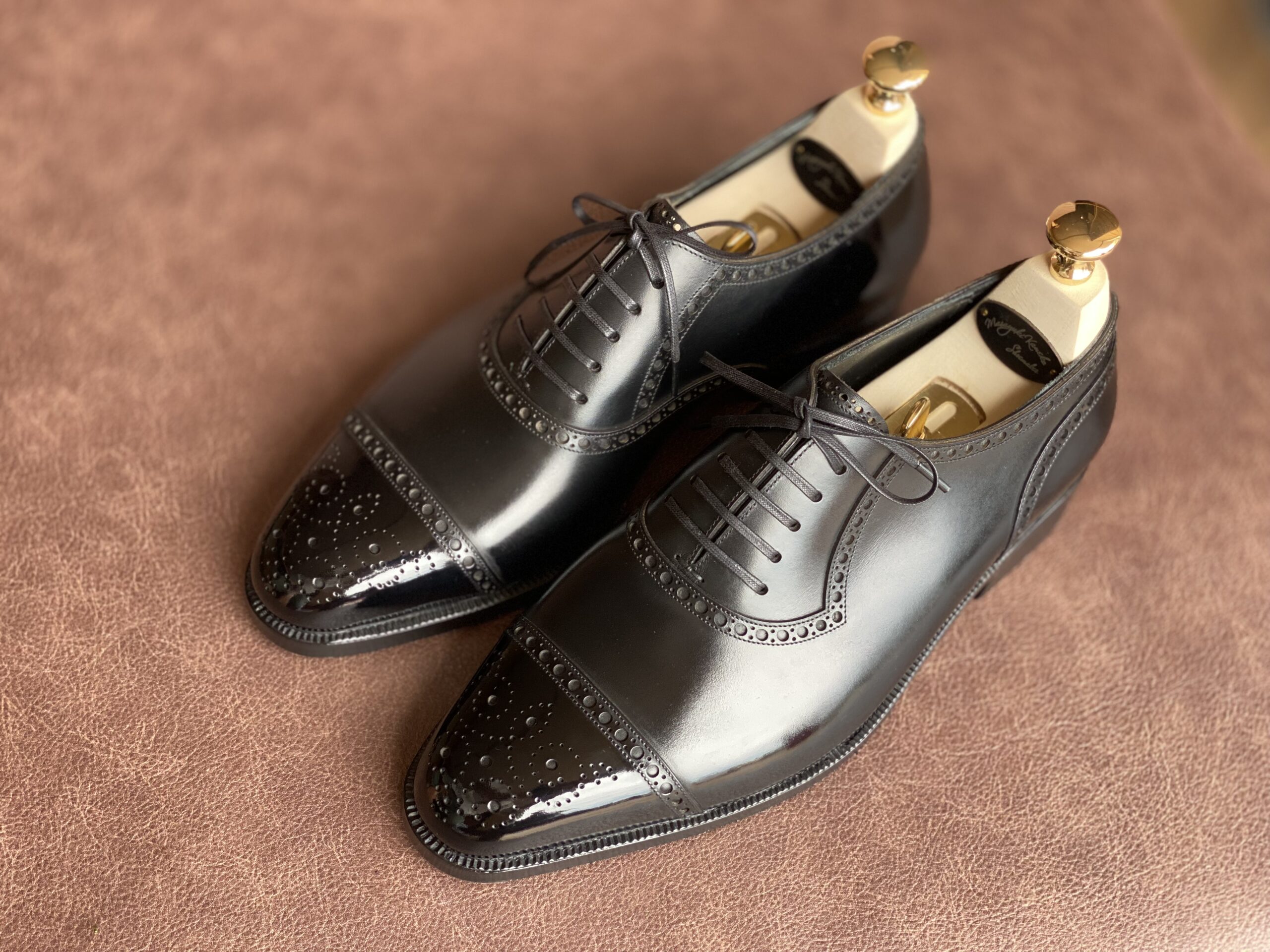
Your feelings are not optional here. A pair you love makes daily care enjoyable and motivates you to wear them for years. At the same time, rational criteria matter—budget, frequency of wear, occasions, and your foot shape. Ignoring these often leads to disappointment. For basics on construction, see Welt construction basics.
How to pick your first pair—3 criteria to avoid mistakes
Beginners often wonder where to start. The market ranges from ¥20,000 to well over ¥500,000, with many designs and constructions. This article provides clear criteria to cut through the noise.
Currency conversion not applied.
Three criteria for choosing dress shoes
1. Define the main occasions
Business, formal, or casual—once you know the setting, the right design and specs follow.
2. Balance budget and quality
Understand what each price tier delivers, then invest according to your wear frequency and expectations.
3. Prioritize fit
No matter how attractive the design, shoes that don’t fit should be avoided—always.
Based on these criteria, we’ll cover TPO by design, leather types, construction differences, and care—comprehensively, from a shoemaker’s viewpoint. We also touch on what sets Japanese brands apart so you can choose with confidence. For maintenance basics, see Shoe care basics.
Construction methods—why Goodyear welts stand out
Construction heavily influences quality and price. The main methods are hand-sewn welted, Goodyear welted, Blake (Mckay), and cemented. For a first pair, I recommend Goodyear welted shoes. They offer a strong balance of cost, function, and durability, with abundant designs across many brands. For deeper structure insights, see How Goodyear welts work.
Key traits of Goodyear welted shoes
Goodyear construction stitches the upper, lining, and insole together, then attaches the outsole via a welt. This layered build delivers exceptional durability and reparability.
Advantages
• Repairability: resoling is possible; with proper care, they can last 20+ years.
• Durability: multiple rows of stitching yield a robust structure for heavy use.
• Comfort: cork filling molds to your foot, reducing fatigue over long days.
• Water resistance: welt channels help keep rain out.
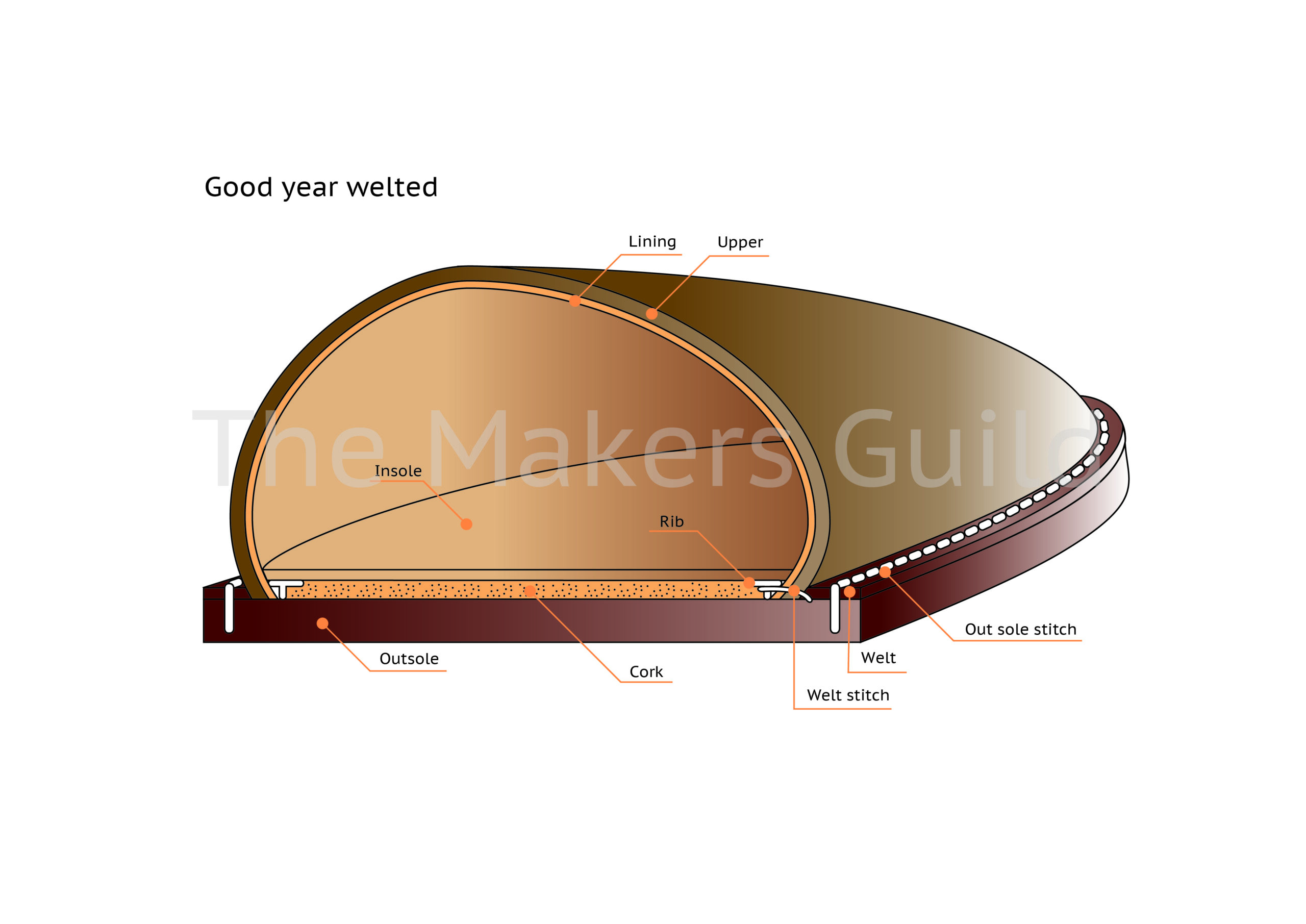
Comparison with other methods
Cemented shoes use adhesive to attach the sole—light and flexible but harder to repair and less durable. Blake (Mckay) offers lightness and flexibility via direct stitching, but trails Goodyear in water resistance and longevity. Hand-sewn welted pairs can surpass Goodyear in long-term comfort, yet given cost balance, they’re not usually where I suggest beginners start.
Leather types and quality benchmarks
Leather choice shapes appearance, durability, comfort, and price. I want customers to pick with a clear grasp of each leather’s traits.
Kip leather
Sourced from young cattle (about 6 months to ~2 years), kip sits between calf and steer. Fibers are sufficiently dense yet slightly coarser than calf, delivering everyday toughness with supple feel—great for business dress shoes with a clean, even grain.
Calf leather
The most refined mainstream bovine leather. Taken from calves under ~6 months, it combines fine grain, flexibility, and strength. Its beauty and workability make it the standard for high-end shoes.
Calf breaks in well and is beginner-friendly. It also dyes evenly—black, brown, navy—suited to both business and casual uses.
Cordovan
Often called “the diamond of leathers,” cordovan comes from a horse’s rump shell. Its mirror-like sheen and smooth hand can last decades with proper care. It’s sensitive to water and asks for experienced maintenance—best once you’re comfortable with leather care.
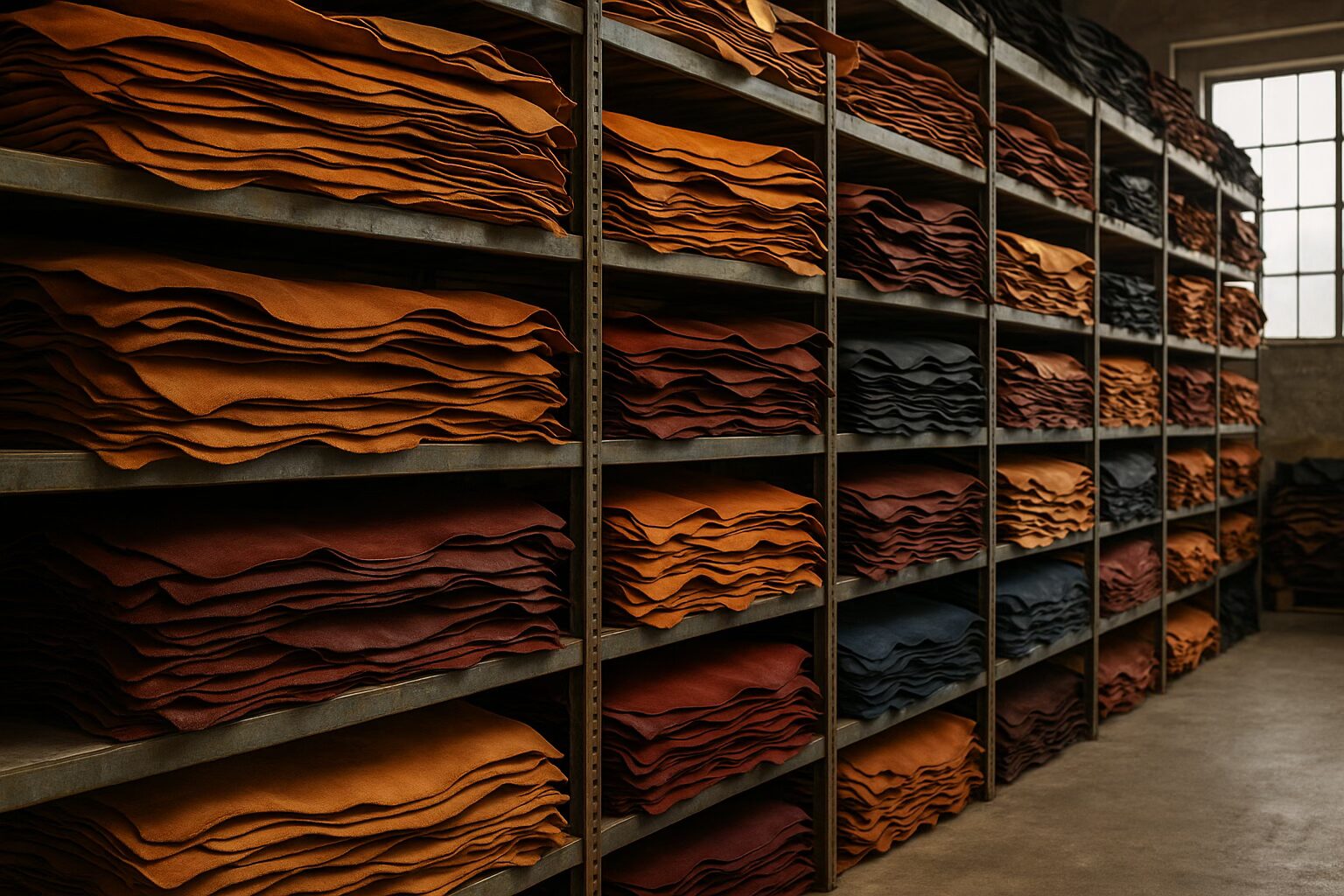
Leather quality correlates with price, but the “best” leather isn’t universal. Consider frequency of wear, occasions, and your willingness to maintain them. For first pairs, versatile bovine leathers are a safe bet.
Design categories and when to wear them—formality and ceremonies
Design signals appropriateness for each setting. In Japan’s business culture, choosing shoes to match TPO (time, place, occasion) is basic etiquette. Below are the main designs and where they fit. For ceremonial basics, see Guide to formal footwear.
Cap-toe Oxford (straight tip)—the safest first choice
A single horizontal seam (the cap) across the toe gives it the highest formality. Works for everything from ceremonies to business. Minimal ornamentation makes it versatile—ideal as a first pair.
In particular, black cap-toe Oxfords are a “can’t go wrong” staple in Japan, from job interviews to high-stakes meetings.
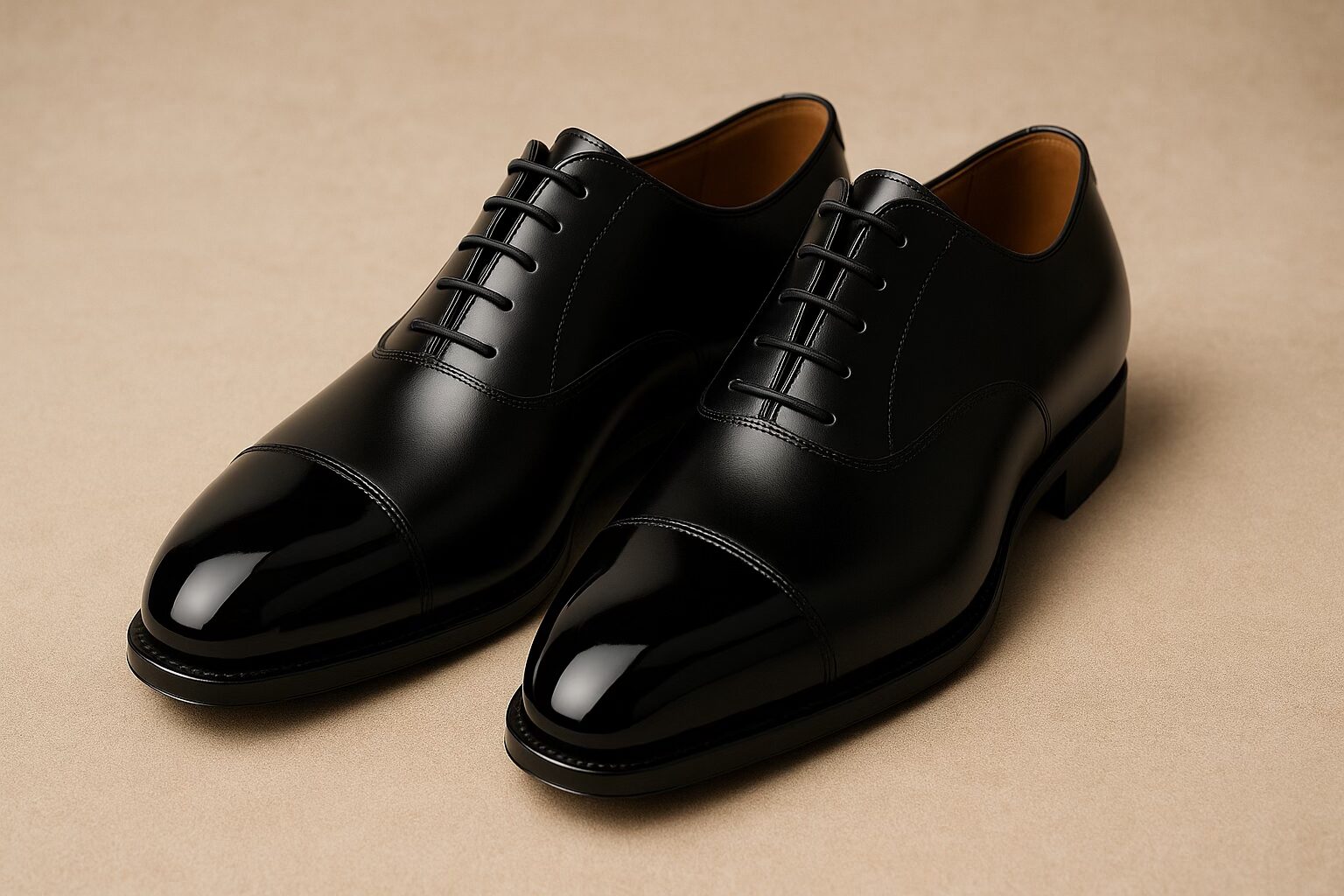
Plain toe—pure simplicity
With no toe decoration, plain-toe Oxfords (including wholecuts) are also formal and can elevate a suit. Minimal design reveals material and make quality—choose decent leather and construction.
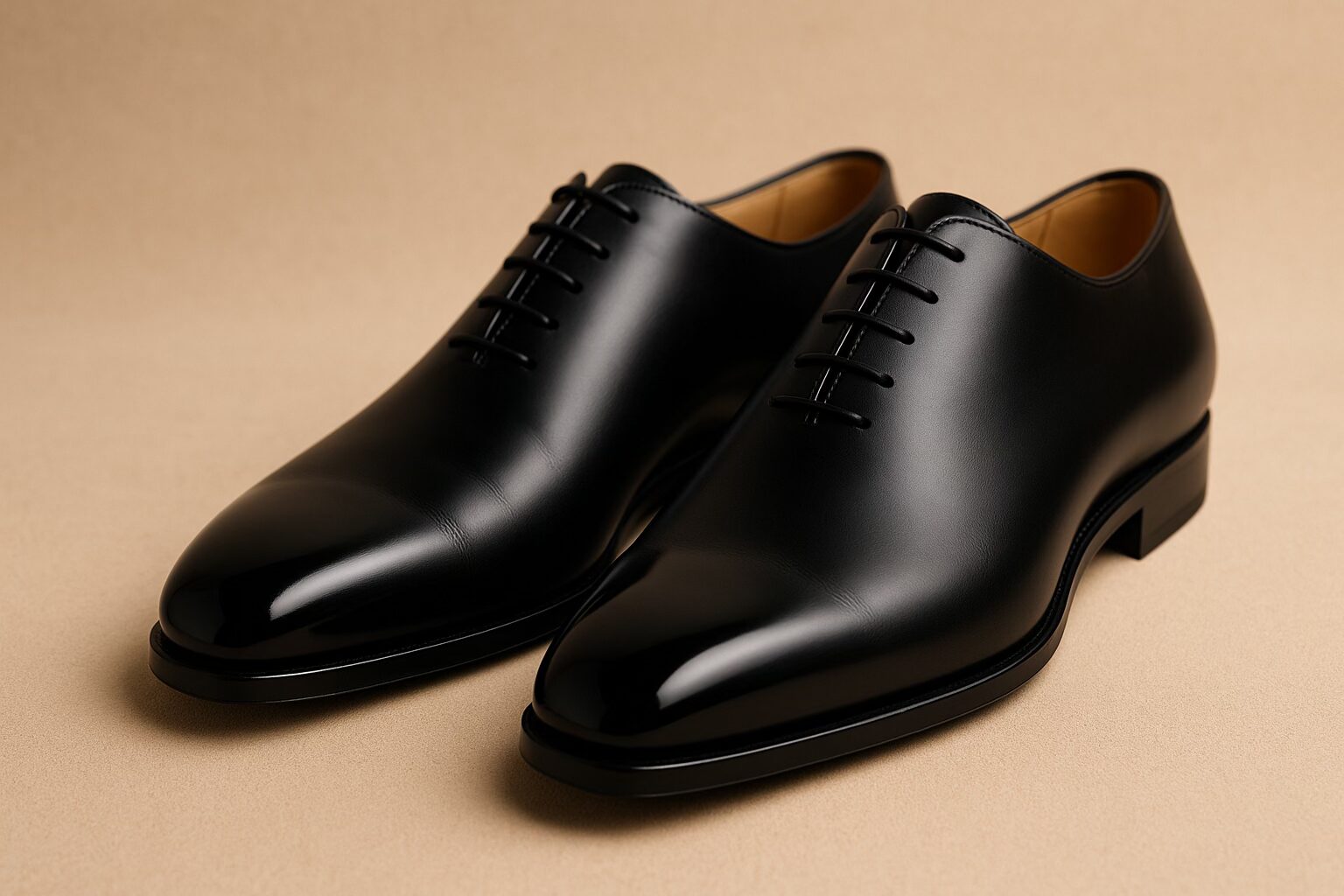
Wingtip—show personality
Wing-shaped toe decoration often paired with broguing. It leans casual, great for business-casual or weekends. In conservative offices, save wingtips for less formal days.
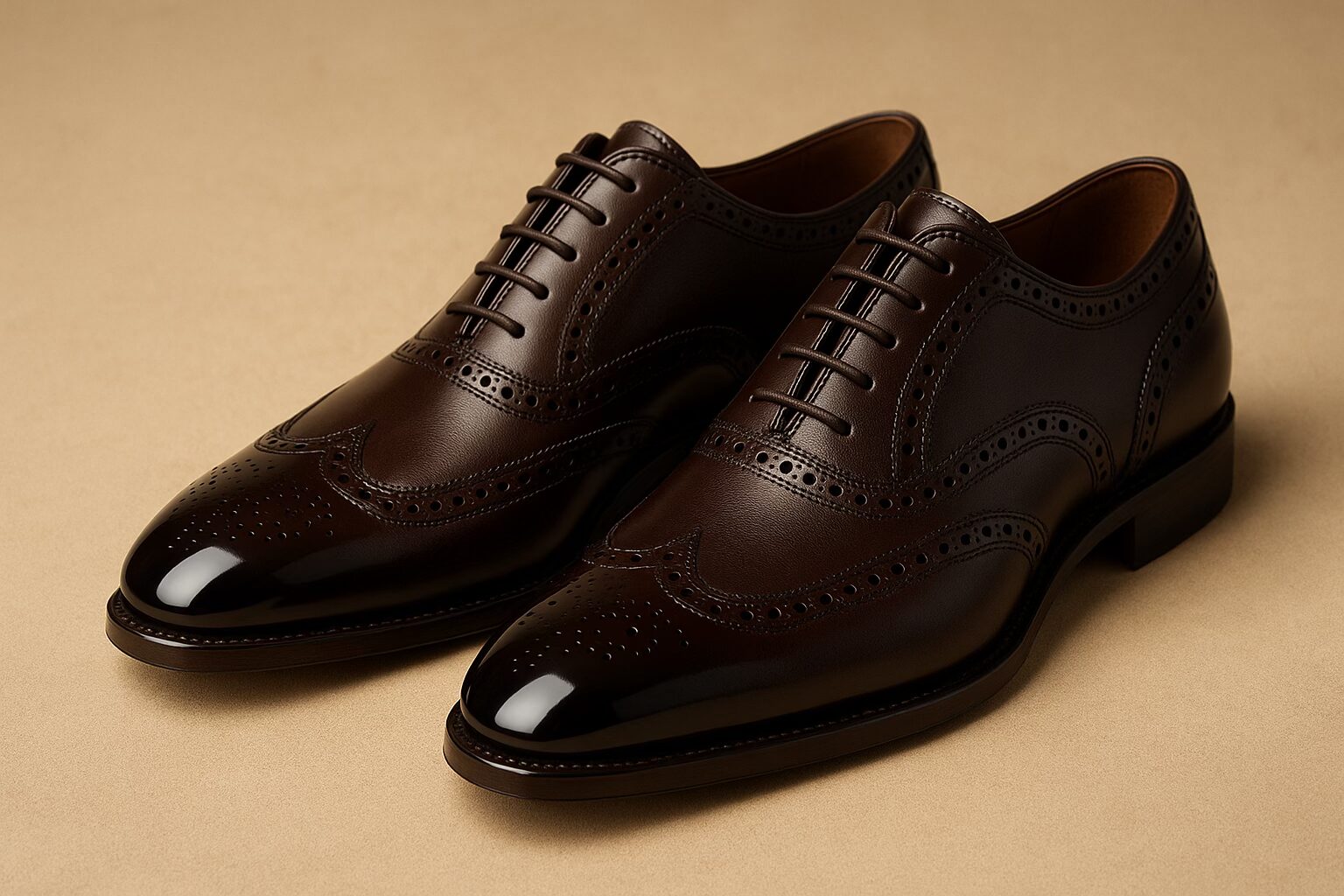
Quick picks
First pair: black cap-toe or plain-toe Oxford
Second pair: brown cap-toe or semi-brogue
Third+: add wingtips or loafers to suit your lifestyle
Match design to your workplace and occasions. Finance and law tend to prefer conservative styles; creative fields may welcome more expressive designs.
Suitable
Not suitable
Price tiers vs. quality—how to invest wisely
Price varies widely by leather, construction, brand equity, and country of origin. From years of seeing (and making) many pairs, here’s what each tier typically delivers.
⚫︎ Entry tier (¥20,000–¥50,000)
Mostly cemented or Blake construction. Mid-grade leathers with basic durability; long-term repair options are limited. Still, it’s enough to experience what leather dress shoes are about.
Popular Japanese options include REGAL for dependable business shoes. Internationally, Clarks and Rockport appear in this bracket. At 2–3 wears per week, expect roughly 2–3 years of service.
⚫︎ Middle tier (¥50,000–¥200,000)
Goodyear welted options open up here. Leather quality improves and, with care, 10+ years is realistic. In Japan, Otsuka and SANYO YAMACHO stand out; abroad, Alden, Church’s, and Tricker’s are classics.
Middle tier highlights
• Built to be repaired—true long-term value
• Stable leather quality that ages beautifully
• Brand character becomes clear
• Satisfaction aligns well with investment
⚫︎ High-end (¥200,000+)
Top materials and expert handwork. Edward Green and John Lobb are emblematic. Here you’re investing in artistry and rarity beyond pure function.
If you value cost-performance, the middle tier is more than sufficient. Still, with the intent to cherish and maintain them, high-end pairs can be a worthy lifetime investment.
For first-time buyers, I recommend the ¥50,000–¥100,000 bracket to fully experience what quality dress shoes offer and to build long-term attachment.
What makes Japanese brands special—real value in Made in Japan
Japanese makers learned from European traditions and evolved them. The biggest strengths are last shapes that suit Japanese feet, adaptation to local climate, and rigorous quality control—earning global respect.
Lasts optimized for Japanese feet
Compared to Western feet, many Japanese feet are wider with higher insteps. Domestic brands build lasts accordingly, delivering standout comfort. Long-standing houses like Otsuka, SANYO YAMACHO, and Scotch Grain have refined their lasts over decades.
Japanese makers also offer broader size runs—extra widths (3E, 4E) and half sizes—so more people can find a true fit.
Climate-ready function
Japan’s hot, humid climate is tough on leather. Domestic brands improve breathability and mold resistance—especially helpful during the rainy season and summer—details not always found in overseas brands.
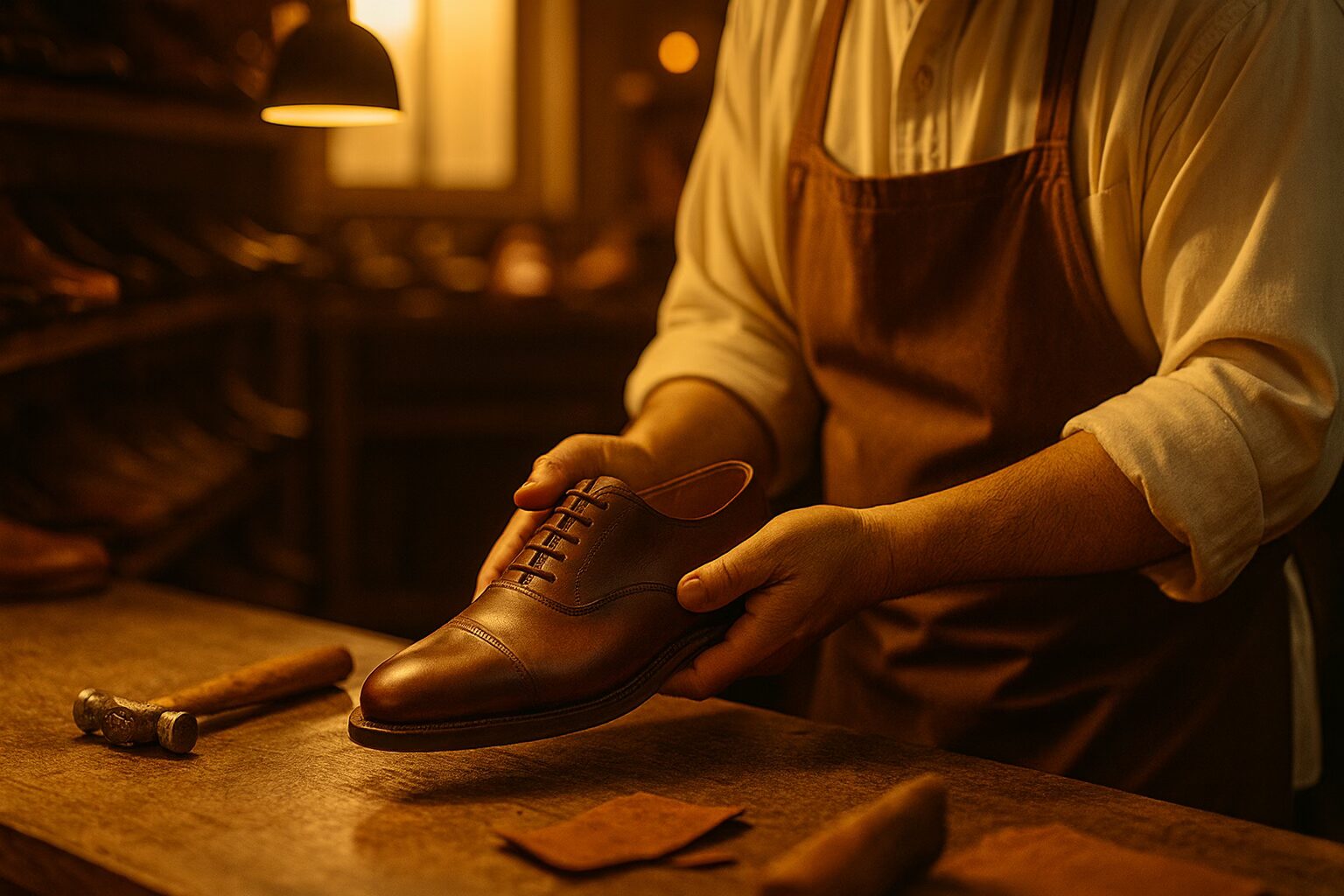
Representative domestic brands
Otsuka: founded in 1872; a long-trusted name with deep heritage
SANYO YAMACHO: blends traditional techniques with modern design
Scotch Grain: practical, great value
REGAL: widely worn business shoes in Japan
Overseas houses lean into tradition and prestige; Japanese brands focus on practicality and iterative improvement. If you prioritize fit and consistency—especially for a first pair—Made-in-Japan is a strong choice.
For those new to dress shoes or uncertain about foot shape, I especially recommend these domestic brands—the fit, value, and aftercare support make them easy, long-term companions.
Sizing in practice—how to get the right fit
Sizing is the most important—and most error-prone—step. Don’t compromise because “my size wasn’t in stock.” Here’s the procedure and checkpoints I use as a maker.
Before you try on
Try shoes in the late afternoon when feet are slightly swollen; mornings can mislead. Wear your typical dress-sock weight, ideally thin socks designed for dress shoes.
If possible, measure your feet beforehand. Many stores offer measurement tools—use them. Buying your first pair at a well-equipped shop is wise; the data you gain becomes a trustworthy reference when exploring other brands later.
Fit checkpoints
Must-checks
Toe room: about 1–1.5 cm (≈0.4–0.6″) beyond your longest toe
Instep pressure: comfortably held—neither pinching nor loose
Heel security: no heel lift while walking
Arch support: the midfoot should feel supported
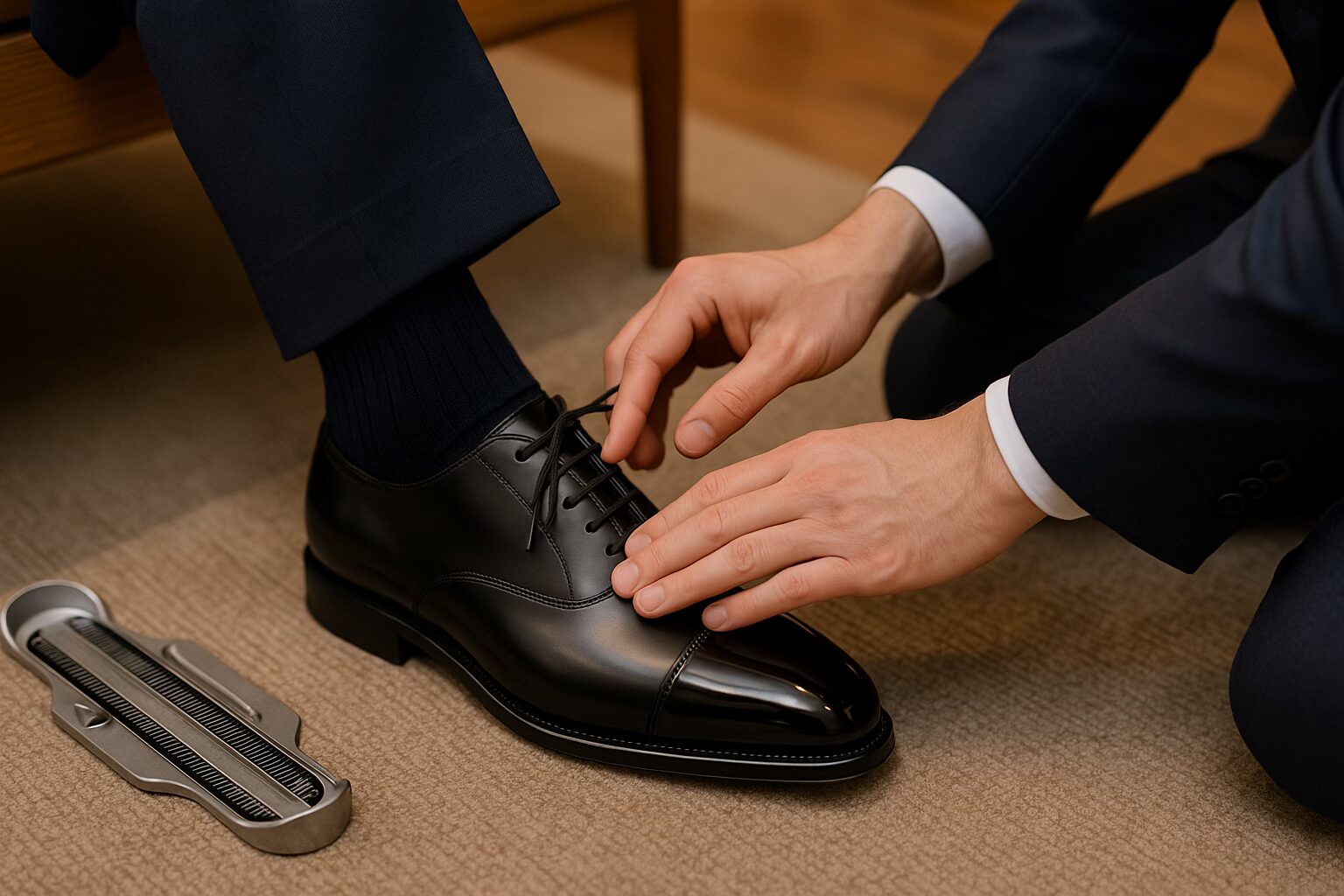
Do a walking test
Standing still isn’t enough—walk for a few minutes and check for issues. Watch for heel lift, toe pressure, and lateral slippage.
Leather will break in, but shoes that fundamentally don’t fit won’t become comfortable. Avoid compromises like “a bit tight but it will stretch” or “a bit big but I’ll add an insole.”
In trusted shops, experienced staff will assist with fitting. Try several sizes without hesitation—this is the first step to a pair you’ll love for years.
*Most shops bring actual sale stock for try-ons rather than dedicated samples. Please handle them politely and try within reason.
Common mistakes—and how to avoid regret
Many buyers fall into predictable traps. From countless consultations, here are the biggest pitfalls and fixes.
The worst: compromising on size
The most frequent—and most serious—error is settling for the wrong size because the design you love wasn’t available in your size. Assumptions like “tight now but it will stretch” or “big but I’ll use thick socks” almost always lead to regret.
Leather does conform, but shoes that are fundamentally too small or too large won’t become comfortable. No matter how beautiful, don’t buy a pair that doesn’t fit.
Risky compromises
• “It’s 0.5 cm small—leather will stretch.”
• “It’s 1 cm big—I’ll use thicker socks.”
• “The width is tight—I’ll get used to it.”
• “It’s on sale—I’ll overlook the size.”

Judging by price alone
“Expensive equals good” and “cheap equals bad” are simplistic. While price relates to quality, the right tier depends on your usage and values.
At once-weekly wear, a solid ¥50,000 pair may satisfy you for years. Daily wearers should consider investing more upfront to save in the long run. Don’t chase price—match quality to your actual wear pattern.
In short: don’t rush, don’t compromise, and clarify your own criteria. Dress shoes are a long-term investment—taking your time yields the best outcomes.
Key Takeaways — A Roadmap to Choosing Dress Shoes
We have explored the essence of choosing dress shoes from a craftsperson’s perspective. Below is a concise recap of the key points and practical next steps to help you avoid common pitfalls and make a confident choice.
Five Core Principles for Choosing Dress Shoes
1. Define the primary occasion first
Pin down when you’ll wear them—business, formal events, or smart casual. Your main use case determines the right design and specifications. For a first pair, black cap-toe Oxfords are the most versatile choice.
2. Never compromise on fit
No matter how attractive the design, shoes that don’t fit should be avoided. Leather does break in, but starting with the correct size is the surest path to long-term comfort.
3. Choose construction that matches your goal
Construction drives quality and price. Common methods include hand-sewn welted, Goodyear welt (グッドイヤーウェルト製法), Blake (Mocca/McKay), and cemented. Consider cost, function, durability, and resolability to select what best serves your purpose.
4. Leverage the strengths of Japanese brands
For foot shapes common in Japan, humid climates, and consistent quality control, domestic brands often excel. They’re especially reliable for a first purchase.
5. Grow attachment through regular care
Daily brushing, monthly cream application, and proper rotation help your shoes age beautifully and become trusted companions over time.
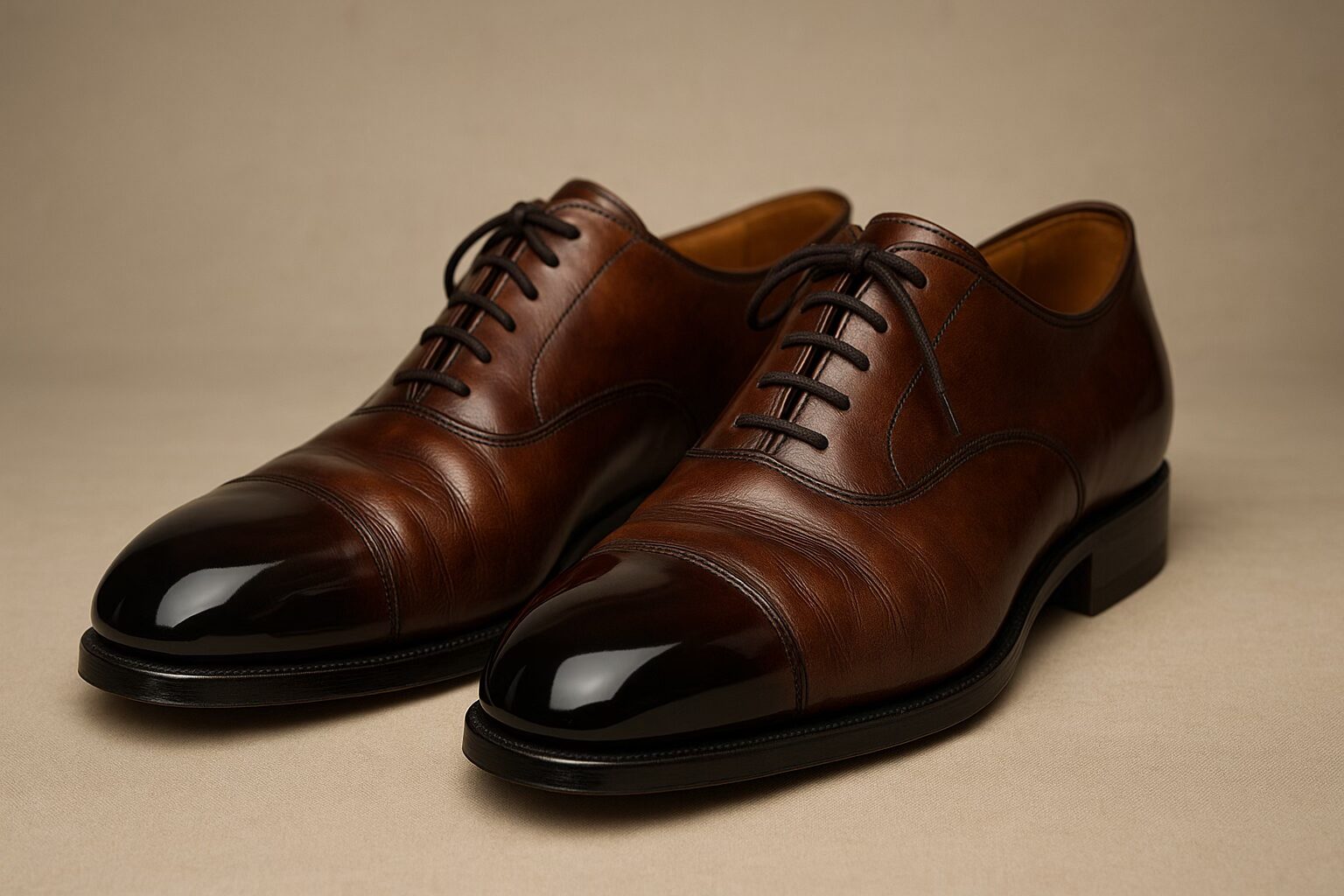
A Craftsperson’s Belief — Carrying Forward Skill and Culture
As shoemakers, our goal is not merely to produce goods, but to create tools that accompany people through life. Each pair embodies careful material selection, refined shaping, and a desire that the wearer will cherish the shoes for years.
Japan’s dress-shoe culture has evolved by studying Western traditions while adapting to local foot shapes and climate. To pass this culture on, makers and wearers alike need to appreciate the intrinsic value of well-made shoes.
Value what you love, and honor the practicality of a tool.
When you balance both, that pair becomes
“your best dress shoes.”
Choosing dress shoes is more than shopping; it’s cultural stewardship—embracing a maker’s craft and nurturing it over time. With the right choice and consistent care, your shoes will develop a beautiful patina and become irreplaceable partners.
If this article helps you choose well and contributes, even a little, to sustaining Japan’s outstanding shoe culture, it will be a great joy as a craftsperson. May you find a pair that enriches your life.
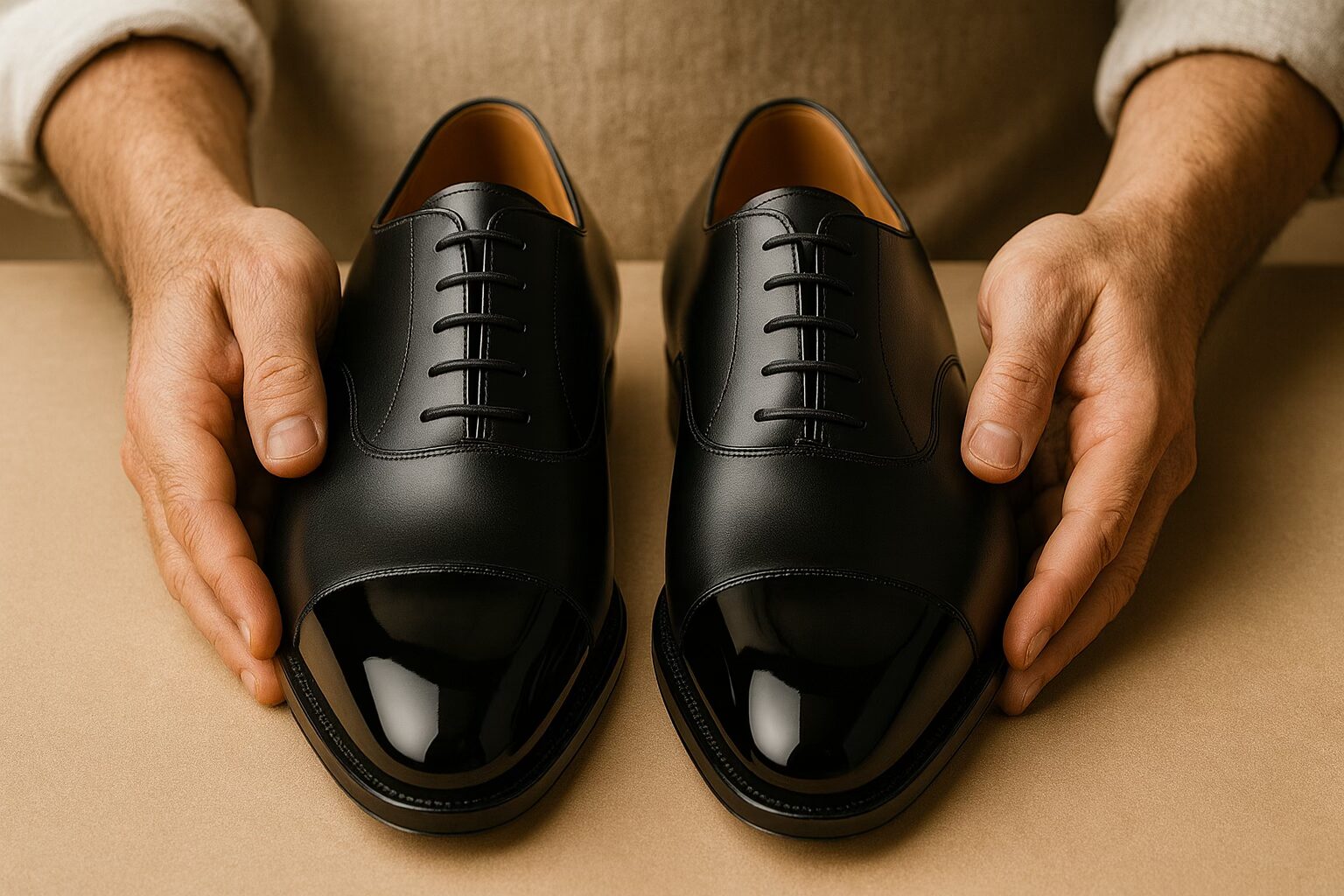
Sponsorship Information
“The Makers Guild” is an international community site that shares craft and shoe culture. We are currently welcoming sponsorships from partners who support our mission.
